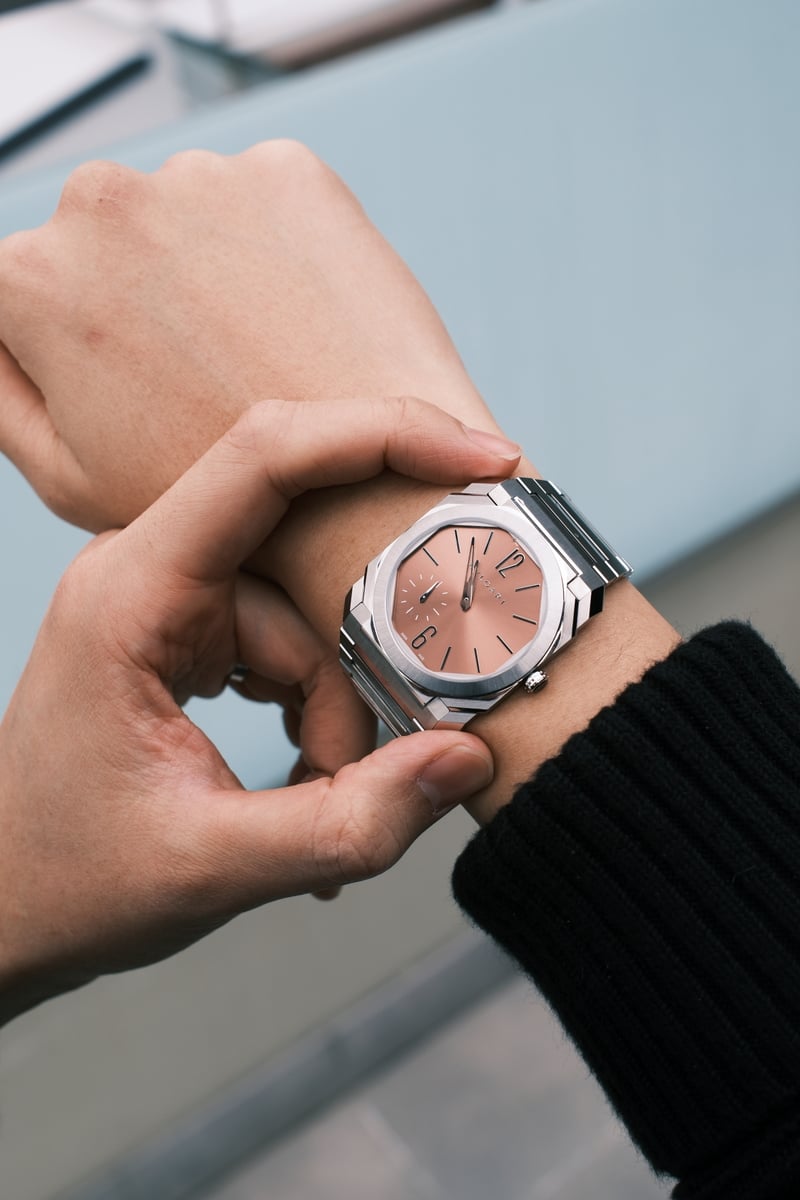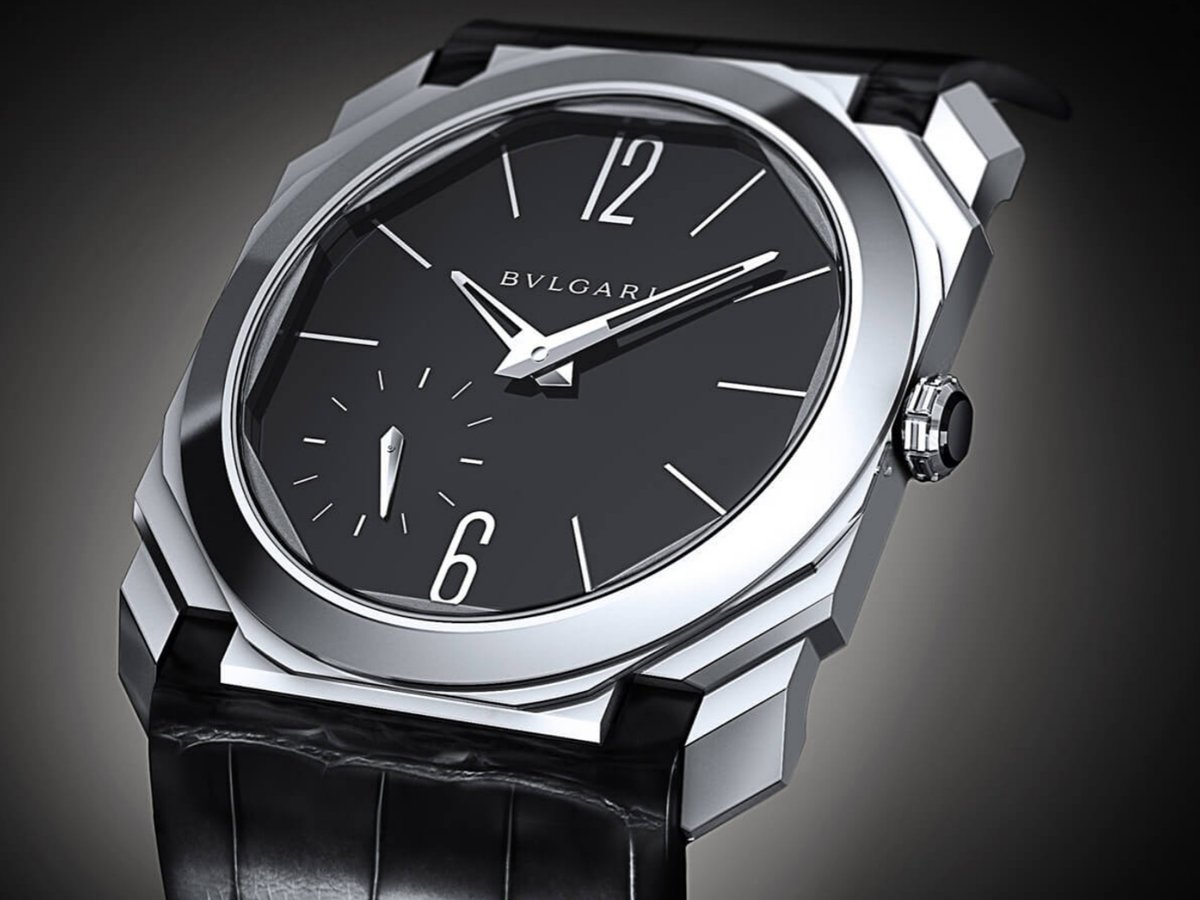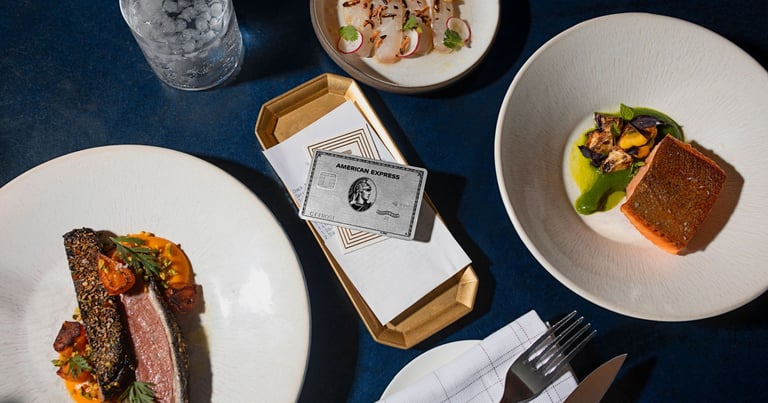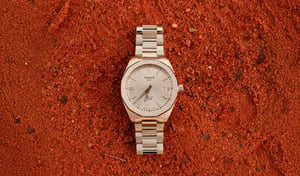While Bvlgari’s Octo Finissimo isn’t a new force in the world of luxury, it’s a design we’ve seen gradually solidify its position in a market dominated by otherwise conventional steel sports watches (Rolex and Omega being the obvious namedrops).
To be sure: LVMH’s signature Italo-Swiss luxury house is unlikely to topple those aforementioned brands any time soon. But, anybody who’s gotten into watches over the past five years will be aware of the Octo Finissimo’s unique appeal as a package with a lot to love.
This January, the brand doubled down on what already works for their audience: unveiling a new ‘Tuscan Copper’ dial, wed to the radical lines of the Octo Finissimo S design.
All told: this is yet another solid and elegant evocation of the Octo Finissimo DNA — one which certainly won’t hurt the growing reputation of Bvlgari’s signature sports watch as a “new icon”.
Bvlgari Octo Finissimo (‘Tuscan Copper’)
Exceptional
96/100
SCOREPROS
- Beautifully executed ‘copper’ dial
- Case & bracelet in 904L steel
- Octo Finissimo ‘S’ design still rocks
CONS
- Might be too cuff-like for some wearers
Read our Q&A-style review of the Octo Finissimo in ‘Tuscan Copper’ below.
RELATED: A Week With The TAG Heuer Carrera ‘Glassbox’
Hands-On With Bvlgari’s Octo Finissimo In Tuscan Copper
Would you consider this an ‘ultra-thin’ watch?

By widely accepted commercial standards? Absolutely.
To be sure: this particular Octo Finissimo model (Ref. 103856) isn’t going to be beating out watches like Piaget’s Altiplano Ultimate or the Audemars Piguet RD#2 in the thinness stakes. And, frankly, it isn’t supposed to.
The latter were made as proofs-of-concept — indeed, Bvlgari has its own equivalent in the guise of the 1.8mm-thick Octo Finissimo Ultra — whereas this Tuscan Copper Octo was built to meet the needs of a commercially viable ‘daily wearer’.
Within that context, Bvlgari has struck the right balance between robustness and a slim profile. The watch is 6.4mm thick: enough to slip comfortably under a long-sleeved polo or dress shirt.
Additionally, that form factor is crucial to achieving the specific kind of movement architecture that’s become synonymous with the Octo Finissimo collection: as we’ll explain below.
Tell us a bit about the movement: any interesting mechanical details?

Dubbed BVL138 — but why bother writing anything down when you can Google this stuff? — this calibre is a mainstay of the wider Octo Finissimo collection.
Technical performance is in line with what you’d expect from a watch brand of Bvlgari’s stature. The BVL138 offers 60 hours of reserve power and ticks away at 21,600vph — an accurate frequency rate, without being overly high-maintenance.
Beyond those topline figures, it’s worth pointing out that this movement also sports a relatively uncommon construction for its price point: that of the micro-rotor (which you can see at 9 o’clock on the caseback).
The smaller platinum winding mass frees up additional space for the movement’s bridges, which are divided into three ‘islands’ — all sporting one continuous Geneva Stripes motif. These lend an element of heritage to a design that otherwise feels, definitively, like a product of the 21st century.
Watch dials can be hard to photograph: how does the ‘Tuscan’ colour hold up IRL?

Lofty as it sounds, Bvlgari’s watchmakers were reportedly inspired by the work of Jacopo da Pontormo when developing the precise shade of copper you now see splashed across this Octo.
An Italian Mannerist who came to prominence in the 16th century, multiple of Pontormo’s works explored the interplay between brown and red tonalities in painting.
The ‘Tuscan Copper’ colourway (as shown above) takes these influences over into the realm of watchmaking: rendered into a dial that is made up of multiple pink, mauve, and sienna shades.
The base of the dial itself is treated with sunburst brushing, so that — in combination with the watch’s polished hands and indexes — light fans across the watch’s face at multiple angles simultaneously.
Stacked on top of the steel case and bracelet (which exude a white-hot sheen under sunlight), the colour reminded us of polished brass or terracotta vases. In other words? Sufficiently different from the matte, yellowish ‘salmon’ that’s been all over luxury watchmaking these last few years.
Let’s talk design: does the Octo’s look differ from that of other luxury sports watches?


Despite the fact it debuted a decade ago, the Octo Finissimo collection has managed to preserve its one-of-a-kind aesthetic in a market overrun by literally hundreds of steel sport watch SKUs.
Innately part of a smaller niche of luxury watches than the Subs and Black Bays of the world, most of the Octo Finissimo’s key traits were refreshed back in 2020: when Bvlgari unveiled the Finissimo ‘S’.

Basically a revamp of the original design language, these S-designated models embraced a reduction in polishing, thicker case and screw-down crown (for increased water resistance).
The Tuscan Copper continues in that tradition: most of its case and bracelet surfaces are detailed with a matte brushed effect, and this is accented by the sparing — but effective — use of satin polish. Most notably: along the lugs and right underneath the bezel.
Overall, the watch continues to have a distinctly ‘architectural’ appeal: made up of intersecting geometries and a clean, engineering-like symmetry that focuses your attention around the dial.
Any drawbacks?
Well, that all depends.
Among the most well-documented aspects of the Octo Finissimo design is the relative lack of taper between the bracelet and case. This contributes to a worn experience which can — especially in these 40mm x 6.3mm dimensions — occasionally feel cuff-like: all the more so if you gravitate to pieces in the 35mm to 38mm range.
As with so many aspects of characterful watch design, this boils down to a question of personal taste rather than objectivity.
What does the competition look like at this budget?
A bit of a mixed bag to be honest.
With the notable exception of Chopard’s 41mm Alpine Eagle ($24,200), most of the other serious alternatives to this Tuscan Copper Octo occupy the threshold above or immediately below it.
There is, of course, the usual array of Rolex Datejust models ($13,350): though getting an allocation for these, at retail prices, is its own unique challenge.
If you’ve enjoyed this review of the Bvlgari Octo Finissimo (in ‘Tuscan Copper’), here are a few more hands-on stories from the world of luxury watches:















